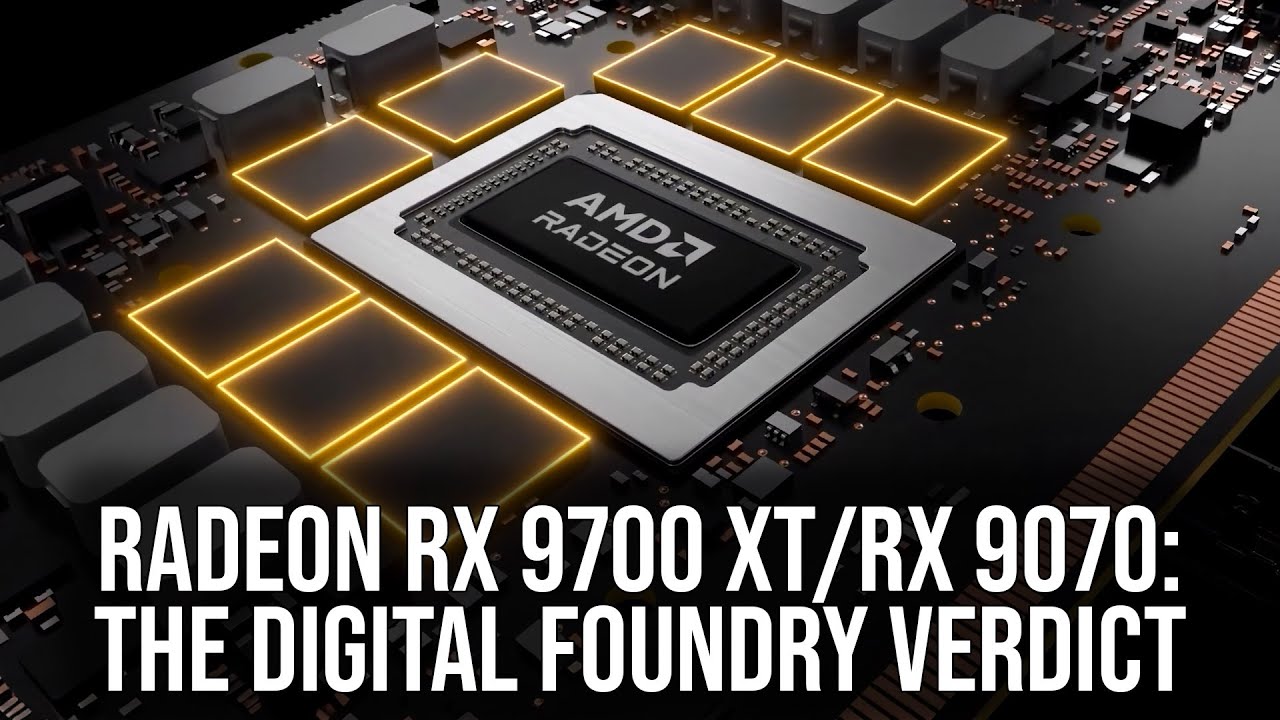The video reviews AMD’s RDNA 4 graphics cards, the RX 970 XT and RX 970, comparing their performance against NVIDIA’s RTX 5070 Ti and RTX 5070, highlighting improvements in rasterization but noting that AMD still lags behind in ray tracing and upscaling technologies. While the RX 970 XT nearly matches the RTX 5070 Ti in performance, it consumes more power, and the RX 970 offers better efficiency, indicating AMD’s competitive advancements in the graphics card market.
The video provides an in-depth review of AMD’s new RDNA 4 graphics cards, the RX 970 XT and RX 970, comparing their performance against NVIDIA’s RTX 5070 Ti and RTX 5070. The reviewer discusses AMD’s efforts to reclaim market share in the graphics card sector, highlighting the need for improved ray tracing performance and a viable alternative to NVIDIA’s DLSS technology. The cards being tested are Sapphire’s factory-overclocked models, which are priced above their MSRP, with the RX 970 XT at $679 and the RX 970 at $620.
The review begins with a technical overview of the RX 970 series specifications, noting the differences in compute units, clock speeds, and power consumption between the XT and non-XT models. The RX 970 XT features 56 compute units and a boost clock of 2.97 GHz, while the RX 970 has 64 compute units and a boost clock of 2.54 GHz. The power requirements for the XT are significantly higher at 304 watts compared to 220 watts for the non-XT. The reviewer emphasizes the importance of power efficiency and performance in real-world gaming scenarios.
Performance benchmarks are then presented, showcasing the RX 970 XT’s capability to nearly match the RTX 5070 Ti in several titles, but at the cost of higher power consumption. For example, in “Black Myth: Wukong,” the RX 970 XT achieves 91% of the RTX 5070 Ti’s frame rates but consumes 33% more power. Conversely, the RX 970 performs better against the RTX 5070, requiring less power to achieve similar results. The review indicates that while AMD is closing the performance gap, it still requires more power to compete effectively with NVIDIA.
The discussion shifts to ray tracing performance, where the RX 970 XT lags behind the RTX 5070 Ti in several tests, illustrating that NVIDIA still holds an advantage in this area. However, the RX 970 non-XT demonstrates more competitive performance against the RTX 5070, indicating that AMD’s RDNA 4 architecture has made strides in ray tracing capabilities. The reviewer notes that while the RX 970 XT pushes hard to compete with NVIDIA, the non-XT model shows better efficiency and value.
In conclusion, the reviewer acknowledges that AMD has made significant improvements with the RDNA 4 architecture, particularly in rasterization performance and pricing. Although the RX 970 XT still trails behind NVIDIA’s offerings in ray tracing and upscaling technologies, such as DLSS, the introduction of FSR 4 shows promise for AMD’s future in this competitive landscape. The review emphasizes that this is AMD’s strongest challenge to NVIDIA in years, leaving viewers eager to see how the competition will evolve, especially in the budget segment of the market.
